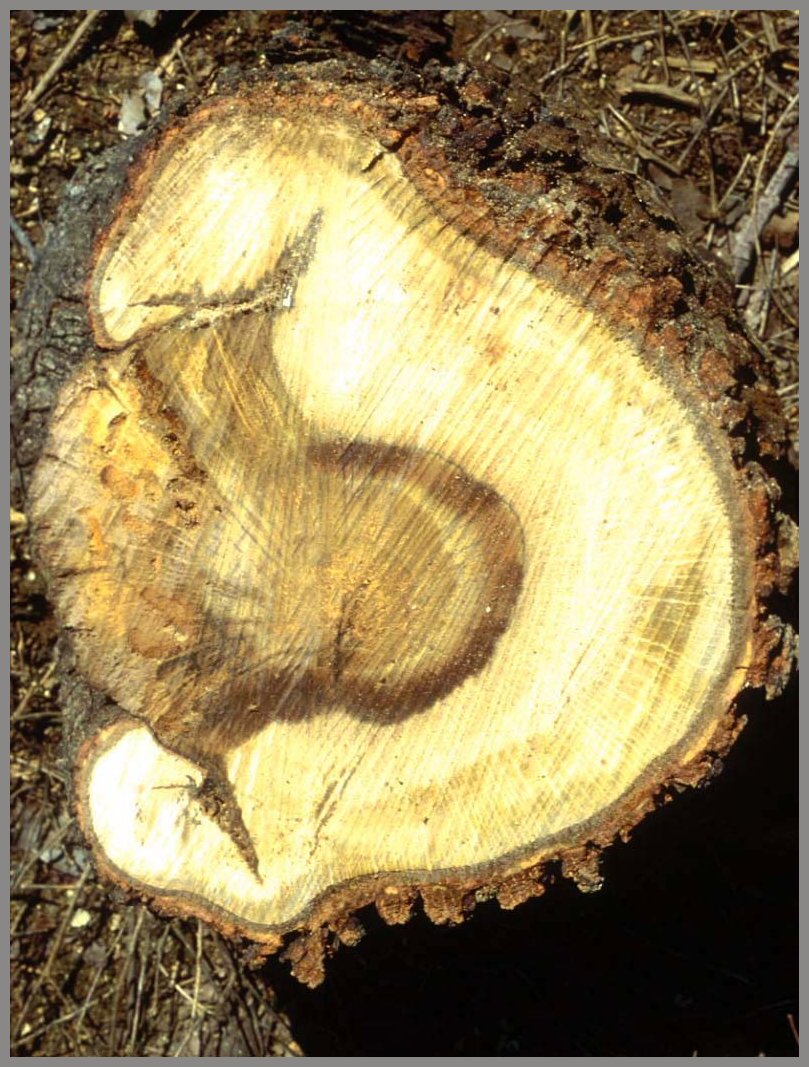

Water / Decay - Water concentrations must be proper for the decay process to develop. Microorganisms cause decayed wood, not water. Portions of the old theory of spontaneous generation are still with us. People still think that water causes wood to rot. The organisms that do cause rot have very exacting requirements for water. If the amount of water in the wood is too high or too low, the organisms will not grow and rot the wood. The decay-causing organisms are obligatory aerobes, which means they must have free oxygen for their growth. When a cavity fills with water, growth of decay-causing organisms stops. When moisture concentration decreases to a point below the fiber saturation point of wood, growth of most decay- causing organisms stops. There are always exceptions to nature's rules. But, for the most part, most decay-causing organisms grow best where the moisture content of the wood is high, but where there is still free oxygen. It takes a relatively long period to reach such a point where the wood begins to separate and oxygen and moisture are available for the organisms. But, once the point is reached, the decay can spread rapidly. Water is also required for the so-called dry rot. The organisms that cause dry rot alter the wood in such a way that moisture accumulates in it. Then the fungi use the water as they grow into new wood surrounding the wet spot. When the moisture is gone, the growth of the fungi stop. But, now a greater volume of altered wood is ready to accept more water for the next period of growth. The concentration of water in wetwood is not the only factor that holds back the growth of decay-causing fungi. Wetwood has a very low amount of free oxygen and a very high pH which are factors that hold back growth of decay-causing fungi.
Dictionary MAIN
PAGE
Text & Graphics Copyright © 2007
Keslick & Son Modern Arboriculture
Please report web site problems, comments and words of interest,
not found.
Contact